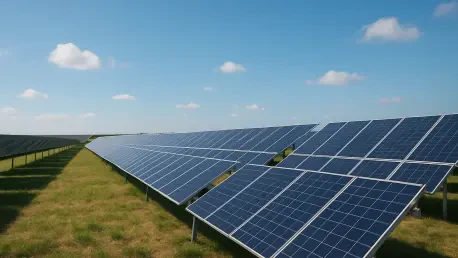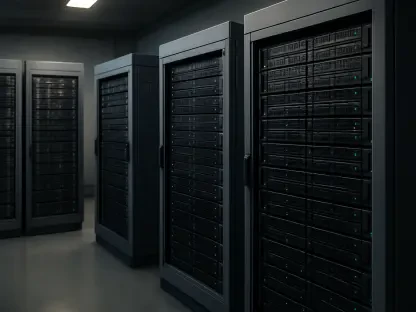Setting the Stage for Solar Expansion in San Antonio
In the heart of Texas, where energy demands often clash with sustainability goals, CPS Energy, San Antonio’s municipal electric utility, has unveiled a transformative initiative to secure 600 megawatts (MW) of solar generation through a power purchase agreement. This move, announced recently, underscores a pivotal moment for the region’s energy market, reflecting a broader shift toward renewable sources amid rising grid pressures and economic opportunities. The purpose of this analysis is to dissect the market dynamics driving this ambitious plan, evaluate the trends shaping solar growth in Texas, and forecast the potential impacts on the state’s energy sector. By exploring current conditions and future projections, this examination aims to provide clarity on how such initiatives could redefine affordability and reliability for utilities and consumers alike.
Unpacking Market Trends and Projections in Texas’ Solar Sector
Solar Capacity Boom in the ERCOT Territory
Texas stands as a powerhouse in the renewable energy arena, with solar capacity experiencing unprecedented growth within the Electric Reliability Council of Texas (ERCOT) territory. The state has solidified its position as a national leader, with thousands of megawatts added to the grid in recent years, driven by favorable economics and abundant land resources. CPS Energy, already managing over 1 gigawatt (GW) of operational solar capacity, is capitalizing on this momentum with its latest request for proposals (RFP) targeting an additional 600 MW. This surge aligns with a market characterized by a massive interconnection queue, where nearly 100 GW of solar projects await grid integration, creating a highly competitive environment for utilities seeking new contracts.
The implications of this oversaturation are twofold. On one hand, it fosters a buyer’s market, allowing entities like CPS Energy to negotiate cost-effective deals as developers vie for limited interconnection slots. On the other hand, delays in grid integration pose significant hurdles, potentially stalling project timelines and increasing costs for stakeholders. As Texas continues to prioritize renewable expansion, the balance between supply abundance and infrastructure readiness will shape the pace of future growth.
The Critical Role of Battery Storage Integration
A defining trend in Texas’ renewable market is the integration of battery storage with solar projects, addressing the inherent intermittency of solar power. CPS Energy has already contracted 470 MW of storage capacity and plans to issue another RFP for additional capacity by the end of this year. This strategy mirrors a statewide recognition that storage is indispensable for managing peak demand and ensuring grid stability, especially in a region susceptible to extreme weather events and fluctuating energy needs.
Compared to other leading states like California, Texas benefits from vast land availability and a deregulated market structure, which accelerate the deployment of storage solutions alongside solar farms. However, scaling these technologies comes with challenges, including high upfront costs and the need for grid upgrades to accommodate increased capacity. The success of initiatives like CPS Energy’s will hinge on strategic investments in storage to maximize the reliability and economic benefits of solar energy over the coming years.
Economic Drivers and Competitive Contract Pricing
Economic factors play a central role in fueling solar adoption across Texas, particularly within the ERCOT market. The oversupply of solar projects in the interconnection queue has driven down contract prices, creating what industry observers describe as a uniquely advantageous moment for procurement. For CPS Energy, this translates into an opportunity to lock in long-term agreements at lower rates, ensuring affordability for San Antonio residents while advancing sustainability goals under its Vision 2027 plan.
Yet, this economic advantage is not without risks. The intense competition among developers can lead to project delays or cancellations if grid access remains constrained. Additionally, the economic viability of solar contracts depends on sustained demand growth and stable regulatory support, both of which could be influenced by external factors beyond local control. Monitoring these variables will be essential for utilities aiming to capitalize on current market conditions.
Policy Risks and Federal Uncertainties Impacting Growth
One of the most pressing challenges facing Texas’ solar market is the uncertainty surrounding federal policy and incentives. Industry analyses indicate that nearly 40% of the state’s planned 116 GW of solar and storage projects are at risk due to incomplete permitting processes across various governmental levels. Potential reductions in federal tax credits, anticipated under shifting national leadership, could further dampen developer confidence and slow project deployment.
This policy landscape introduces a layer of complexity for utilities like CPS Energy, which must navigate these risks while pursuing aggressive renewable targets. The urgency to finalize agreements before potential incentive rollbacks adds pressure to procurement timelines. As Texas strives to maintain its leadership in renewables, the interplay between local initiatives and national policy will remain a critical determinant of market stability and growth potential.
Future Outlook: Innovations and Market Evolution
Looking ahead, the Texas solar market is poised for continued expansion, driven by technological advancements and evolving economic incentives. Innovations in battery storage efficiency and grid-scale solar designs are expected to reduce costs and enhance reliability, making renewable energy increasingly competitive with traditional sources. Projections suggest that the state will sustain its dominance in renewables through at least 2027, provided utilities and developers adapt to emerging challenges.
However, the persistence of interconnection backlogs may keep contract pricing attractive in the short term, while long-term growth could face headwinds from regulatory changes. The emphasis on pairing solar with storage is likely to define the next phase of market evolution, ensuring grid resilience amid rising energy demands. For CPS Energy and similar entities, staying ahead of these trends will require proactive planning and collaboration with policymakers to streamline project approvals and secure financial support.
Reflecting on Insights and Strategic Pathways Forward
Looking back, this analysis illuminated the dynamic forces shaping Texas’ renewable energy market, with CPS Energy’s pursuit of 600 MW of solar capacity serving as a focal point for broader trends. The examination revealed a landscape marked by robust solar growth, favorable economic conditions, and critical storage integration, tempered by policy uncertainties that threaten to derail progress. Key implications include the urgent need for utilities to act swiftly in securing contracts and the growing importance of storage as a cornerstone of grid reliability.
Moving forward, strategic pathways emerge as essential considerations. Utilities are encouraged to prioritize rapid project agreements to mitigate policy risks while investing in storage technologies to enhance solar’s value. Policymakers face the task of streamlining permitting processes to unlock stalled projects, ensuring Texas maintains its renewable edge. For local communities in San Antonio and beyond, supporting clean energy policies and exploring distributed solar options offer a tangible way to contribute to this transformative shift, paving the way for a more sustainable and resilient energy future.









